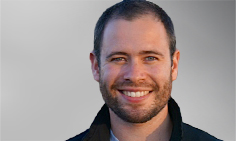EQUPMENT is essential in medical practice, yet in many parts of the world lack of equipment is a constant challenge.
Many doctors who visit developing countries and see the lack of equipment want to do something to help.
Returning to our own practices, the prosperity we enjoy contrasts starkly with the austerity of practices in low and middle-income countries (LMICs), and it’s normal to want to “do something”. It seems a logical step to donate old equipment as a good start — especially in a society where replacing anything considered obsolete with state-of-the-art is considered the norm.
Sometimes donations of surplus equipment from high-income to low-income countries can be helpful — some essential items are simply not available by any other means.
But often donations don’t solve the problem and can do more harm than good. Suitability is the key.
The acquisition of equipment, donated or otherwise, must be properly planned and coordinated. Processes for maintenance, repair and replacement of consumable parts need clarity from the outset.
Rigorous appraisal of medical devices by those who will use them in LMICs avoids the problem of providing a device that is not appropriate to the context in which it will be used. It’s the same appraisal system that we insist on for medical purchases in our environment.
The consequence of not considering the suitability of equipment is that, at best, it lies unused and unserviceable. Often equipment is rendered unusable because essential consumables have run out or local biomedical technicians cannot repair faults.
At worst, the consequence is inappropriate and poorly maintained equipment being used by untrained people on unsuspecting patients — with potentially disastrous results.
The WHO estimates up to 70% of donated medical equipment lies idle, populating “equipment graveyards” ubiquitous throughout the developing world.
In response, the WHO has released guidelines on the provision of donated medical equipment. Among other recommendations, the guidelines suggest a minimum 2 years’ supply of consumables and highlight the importance of an “active participatory role for the intended recipients”.
There are many innovative organisations that prioritise the provision of suitable equipment as part of their wider strategy for improving global health disparity.
Lifebox is one such organisation, with an emphasis on education and collaboration.
Formed as a joint project between the World Federation of Societies of Anaesthesiologists, the Harvard School of Public Health and the Association of Anaesthetists of Great Britain and Ireland, Lifebox’s initial focus is to address the global oximetry gap.
A pulse oximeter is accepted as the gold standard monitor for detecting hypoxaemia. It’s a device that can save lives not only in the operating theatre and recovery room but also on the ward and in the community. According to a recent Lancet Global Health article, 20%-30% more cases of pneumonia will be detected with a pulse oximeter than with clinical signs alone.
Lifebox is providing pulse oximeters with an education and warranty package to LMICs. Fundamentally, the emphasis is on collaborative education and training. Pulse oximetry is a first step on the road to improving global patient safety.
IMEC is another organisation that aims to deliver suitable equipment to low resource settings. After close consultation with recipient communities, it has developed and delivers all-in-one equipment “suites” to meet specific equipment shortfalls. It is committed to supplying consumables for 3-5 years.
Both these organisations, and the many others like them, understand that equipment that is donated or developed must be suitable to the context in which it will be used.
It’s uniquely human to recognise need and want to address it. The challenge is to work with our colleagues in LMICs to deliver suitable and sustainable solutions to their equipment problems — and not just dump our old stuff on them.
Dr Simon Hendel is an anaesthesia fellow, an associate of the Centre for International Health at the Burnet Institute and an intern at the Global Surgical Consortium. He is currently based in Laos working as an Australian Society of Anaesthetists fellow. He has been involved with Lifebox, including conducting a needs assessment and delivering education packages. He has not received funding from and has no financial interest in the organisation.

 more_vert
more_vert
Daktari I should have qualified my comment by saying that the money should be sent through a reputable charity who are working in the area. I have heard of drug companies off-loading expired medication which is not able to be used as it is not on the local formulary or is irrelevant to care needs. Likewise individuals send samples of products which are not availbale in sufficient quanitities to treat individuals let alone the local communuity. The local recipients then have to pay for disposal of these items. It is preferable for these companies and also indviduals to make a financial donation which can be used to purchase products which are useful. Inapporpriate donations actually cost developing countries.
As an anaesthetist with a strong interest in medical equipment I endorse a lot of what Simon has to say. I have been involved in sending as well as receiving a lot of medical equipment. While some of it has been junk much has proven very useful indeed. It is sometimes possible to cannibalise broken equipment to obtain much-needed parts. Here in East Africa we are gradually improving the technical expertise of the larger hospitals, but it is very slow progress. I cannot endorse Kay’s comment to send money unless it is possible for it to be received by someone whose integrity you are certain of.
It is a similar situation with drug donations. Inapporpiate donations actually create more problems for the recipients. Most third world countries have an essential drugs list and will not use products not included on this list. Also products labelled in a language which is not spoken by the health workers cannot be used. After major natural disasters inapporpiate drug donations just increase the burden of health care workers as they have to be sorted and disposed of. A financial donation is far more usfeul.